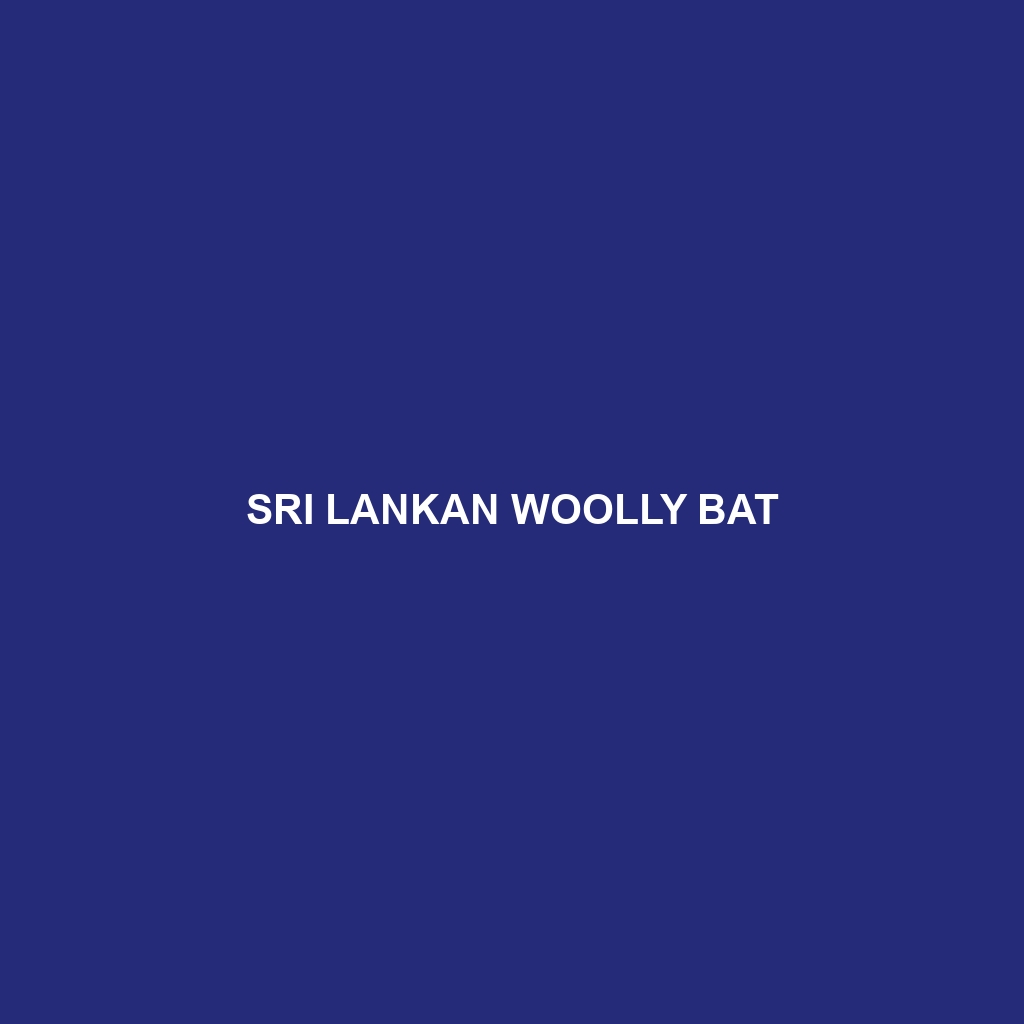Sri Lankan Woolly Bat
Common Name: Sri Lankan Woolly Bat
Scientific Name: Kerivoula tigris
Habitat: The Sri Lankan Woolly Bat is primarily found in the rainforest regions of Sri Lanka, particularly in the central and southwestern parts of the island. This species thrives in lush, humid environments characterized by dense foliage and abundant vegetation, including both tropical and subtropical forests. It often roosts in tree hollows, under leaves, or within dense foliage, making it adept at avoiding predators.
Physical Characteristics: The Sri Lankan Woolly Bat is a small-sized bat, typically measuring between 8 to 10 centimeters in body length. It is distinguished by its soft, woolly fur, which can vary in color from golden brown to light grey. Notable features include large ears and a broad, rounded nose, which are adapted for its nocturnal lifestyle. Its wings are relatively long and slender, aiding in agile flight through the dense forest.
Behavior: This bat exhibits fascinating behaviors, primarily being nocturnal. It is a proficient flyer and often engages in agile maneuvers while hunting for insects. The Sri Lankan Woolly Bat prefers to forage at night, using echolocation to detect prey, typically feeding on a variety of insects such as moths and beetles. Socially, it may roost in small groups, often found in close proximity to others of its species, contributing to a communal roosting behavior.
Diet: The diet of the Sri Lankan Woolly Bat primarily consists of insects. It predominantly feeds on moths, beetles, and other small flying insects, showcasing its role as a natural pest control agent within its habitat. The bat’s ability to hunt effectively at night allows it to take advantage of the nocturnal insect population, significantly contributing to its survival.
Reproduction: Reproduction in the Sri Lankan Woolly Bat typically occurs once a year. The breeding season coincides with the warmer months when food resources are abundant. After a gestation period of approximately 60 to 70 days, females give birth to a single pup, which they care for until it is capable of independent foraging. Maternal care is intense, with mothers frequently feeding and protecting their young from potential threats.
Conservation Status: The Sri Lankan Woolly Bat is currently listed as ‘Endangered’ by the International Union for Conservation of Nature (IUCN). Habitat loss due to deforestation and agricultural expansion poses significant threats to its survival. Conservation efforts are essential to protect this unique species and its natural habitat.
Interesting Facts: One unique aspect of the Sri Lankan Woolly Bat is its ability to adapt to various roosting sites within its rainforest habitat. While they prefer tree hollows, they can also roost in human-made structures, showcasing flexibility in their living conditions. Additionally, they play an important role in pollination and seed dispersal due to their foraging habits.
Role in Ecosystem: The Sri Lankan Woolly Bat plays a vital role in its ecosystem as both a predator and a prey species. By controlling insect populations, it helps maintain ecological balance, preventing pest outbreaks that could harm plant life. Furthermore, as a prey item for larger predators, it contributes to the food web, highlighting its importance in the biodiversity of Sri Lanka’s rainforests.
